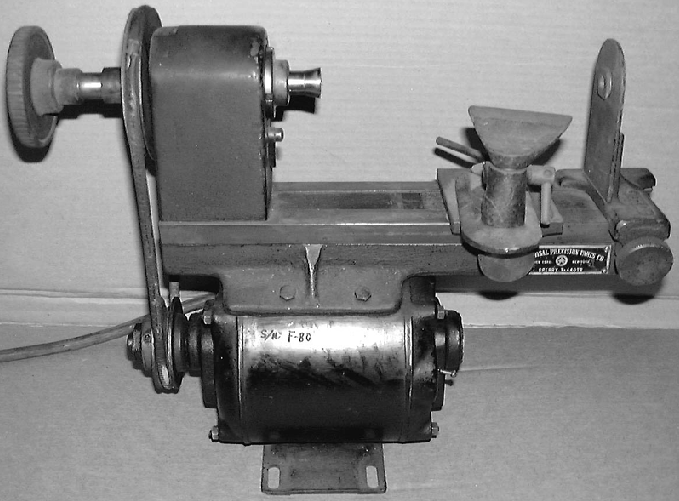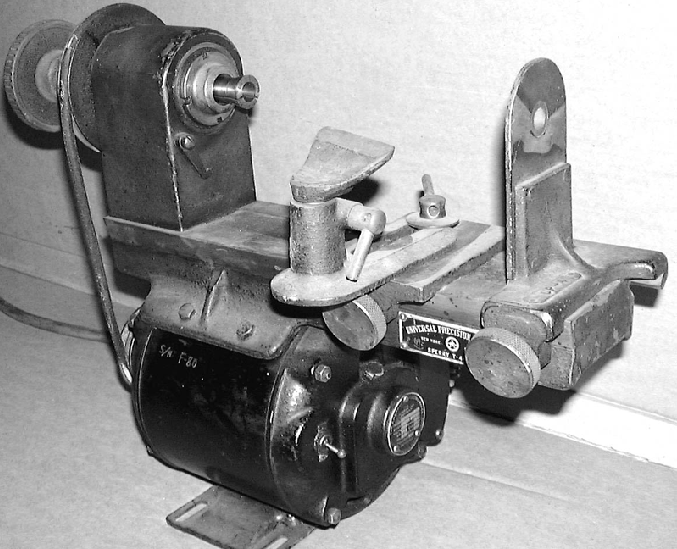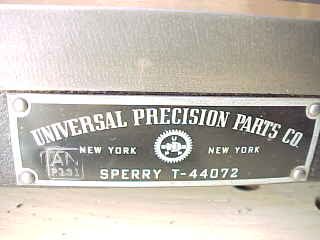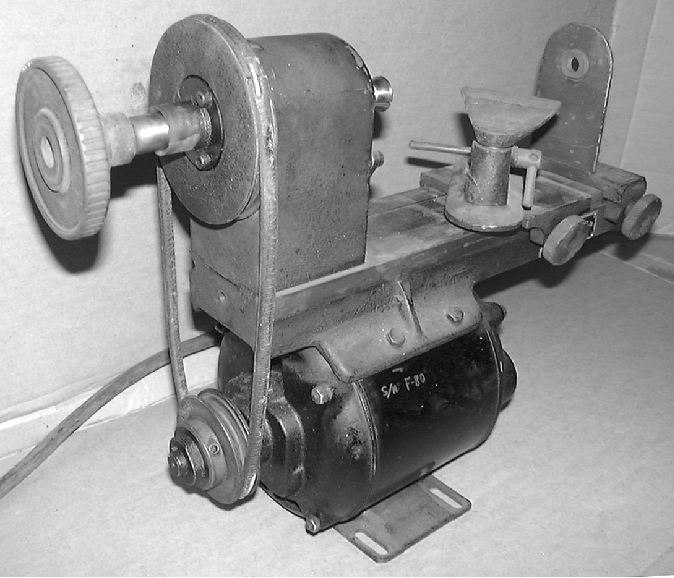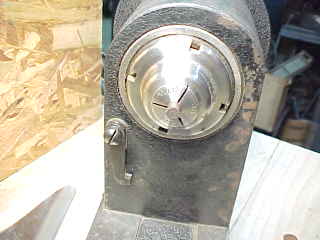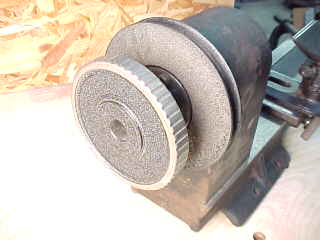MKC TOOLSSperry T-44012 Lathe Restored
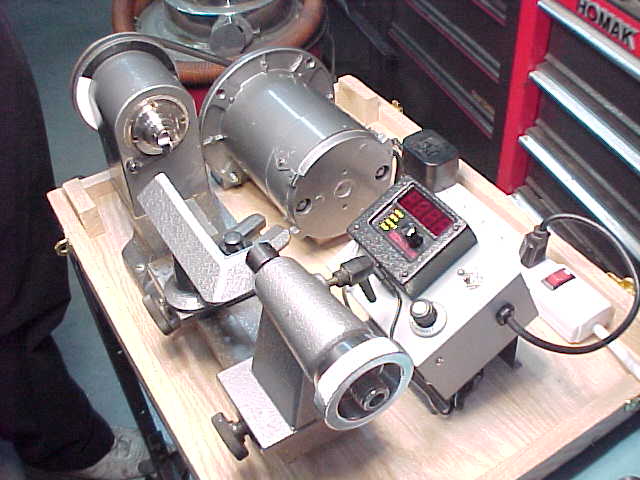 This is a small 7" swing Sperry T-44072 collet lathe custom
restored and modified for Michael Strom, Ft. Worth, Texas.
by Skip Campbell, MKC Tools.
It is a collet type lathe with drawbar and
uses size 3 collets with a
1/2 dia. maximum. It came with a 1/4" collet which is
perfect for the pen turning mandrel. It is also equipped with a
1/2" collet, a small custom made spur center and live center and an expanding
bowl turning chuck. Distance between centers is 7 1/2".
A tailstock from a Carbatech mini lathe was added and
a 6" tool rest for pen and small bowl turning.. The motor is
a 1/3 HP DC motor with a KB controller mounted
in a custom enclosure and equiped with an MKC
digital tachometer. The original color was a
black wrinkle paint but was in very bad condition.
The new finish is a gray hammer finish paint.
The lathe has proven itself very
capable by turning lots of pens and bowls.
Happy turning, Michael.
This is a small 7" swing Sperry T-44072 collet lathe custom
restored and modified for Michael Strom, Ft. Worth, Texas.
by Skip Campbell, MKC Tools.
It is a collet type lathe with drawbar and
uses size 3 collets with a
1/2 dia. maximum. It came with a 1/4" collet which is
perfect for the pen turning mandrel. It is also equipped with a
1/2" collet, a small custom made spur center and live center and an expanding
bowl turning chuck. Distance between centers is 7 1/2".
A tailstock from a Carbatech mini lathe was added and
a 6" tool rest for pen and small bowl turning.. The motor is
a 1/3 HP DC motor with a KB controller mounted
in a custom enclosure and equiped with an MKC
digital tachometer. The original color was a
black wrinkle paint but was in very bad condition.
The new finish is a gray hammer finish paint.
The lathe has proven itself very
capable by turning lots of pens and bowls.
Happy turning, Michael. 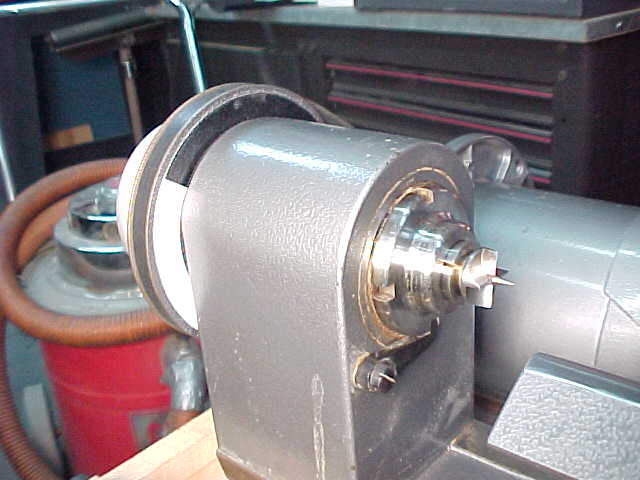

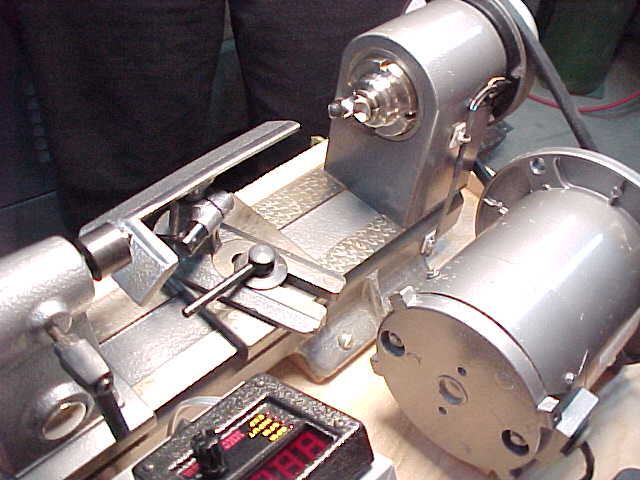
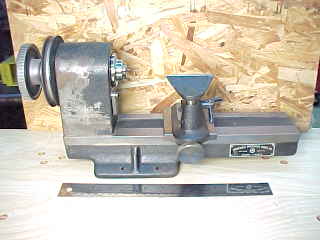
For more info contact skip@mkctools.com MKCTOOLS HOME More info on the Sperry lathe below. |
